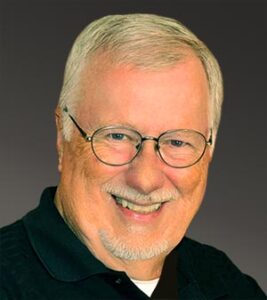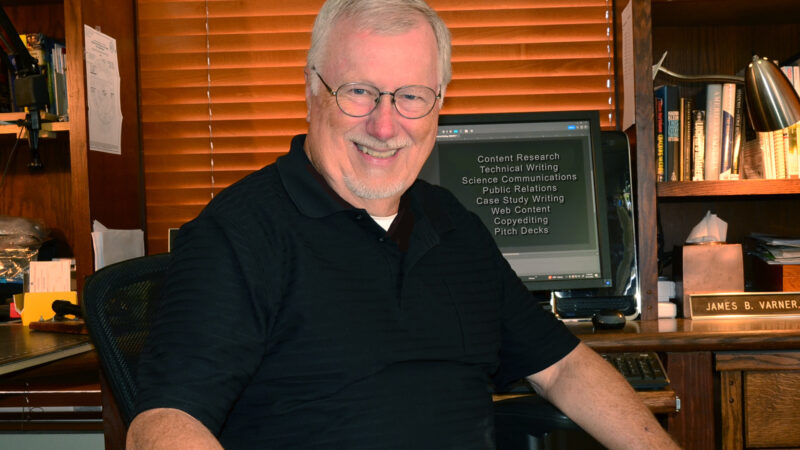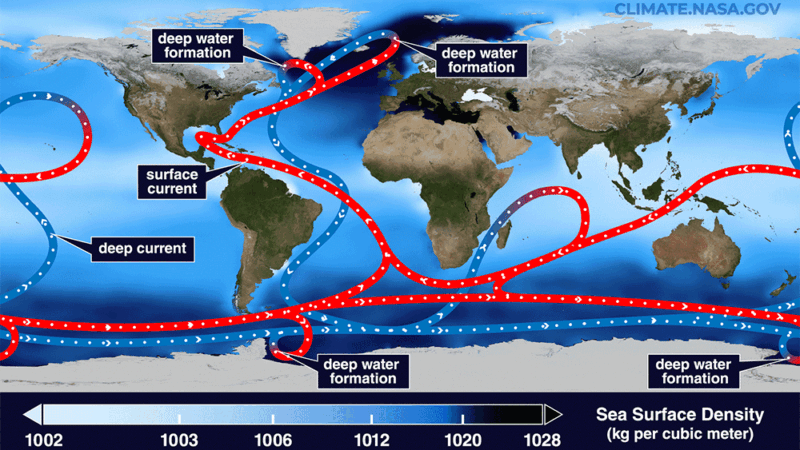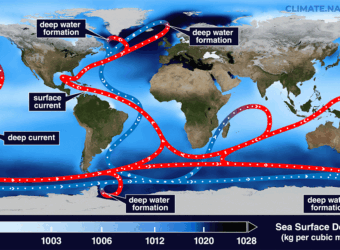Sophisticated “Time Machine” thrown into the Cosmos
Sophisticated "Time Machine" thrown into the Cosmos

Sophisticated “Time Machine” thrown into the Cosmos
— JB Varner
The spaceship traveled through the vast emptiness of space for nearly a month before arriving at its destination. By comparison, Apollo astronauts traveled for 2 and a half days to reach the moon.
Its original boost was just enough to throw the craft all the way to its final home. Of course, there were minor thrusts to fine tune the trajectory, but the calculations and engine burns were so efficient, that the life of the mission was extended due to the fuel savings that would have gone into additional course corrections.
But this voyage did not start with the launch atop a powerful rocket. The story of this adventure begins in 2013 at NASA’s Goddard Space Flight Center Greenbelt, Maryland where individual pieces of the craft started to arrive. After assembling the craft for four years, the spacecraft was sent to Houston to test its thermal resilience. Finally, the craft went to California where the various components were tested over a three-year time frame for operational readiness.
After all the testing was completed, the spacecraft was loaded onto a cargo ship for the 5,800-mile voyage to French Guiana in Oct 2021.
The spacecraft, named after former NASA administrator James Webb who oversaw the Mercury, Gemini, and Apollo programs, was launched into space on December 25th 2021.
So this is the fascinating journey of the James Webb Space Telescope (JWST), one of the most complex spacecraft ever built, entering orbit around a special point in space known as Lagrange Point 2 (L2).
A Lagrange point is where the gravitational forces from the Earth and the Sun are equal. There are five of these special places, where spacecraft can maintain their positions using very little fuel.

JWST is the largest space telescope ever launched. This large mirror size (around 21 feet diameter) required that the spacecraft be folded up origami style to fit into the payload shroud for launch.
During the journey, the JWST began unfolding–deploying solar panels, an antenna, and a massive 5-layer sun-shield. Finally, the spacecraft deployed its primary mirror, 18 gold plated hexagonal segments.
Since the James Webb Space Telescope (JWST) came online in 2022, surprising images have changed our understanding of how the early universe developed, posing significant challenges to astronomer’s standard model of cosmology. In particular, the JWST is forcing scientists to develop new models for galaxy and black hole formation.
To understand the science behind the design of the telescope let’s start with some background.
The wavelength of visible light from objects in the early universe is transformed by traveling through space, which is expanding. This expansion stretches the wavelength of visible light into the infrared portion of the electromagnetic spectrum which is normally beyond our ability to see. Infrared light is basically a form of heat.

If you have attended a professional sports match and watched players enter the stadium between towering jets of flame, you can feel the infrared waves on your face a moment later. Because the JWST is extremely sensitive to this type of radiation, it must be carefully shielded from unwanted sources like the sun. During its flight, the JWST was always in the shadow of its tennis court sized sun-shield to prevent damage to sensitive instruments and cameras.
So, in order to see distant objects from the early universe, whose visible light has been stretched into the infrared, a telescope cannot look at visible light but instead must record infrared light. Unlike the visible light utilized by traditional telescopes and by the Hubble telescope, JWST was specifically designed to capture infrared wavelengths.
By recording infrared light, astronomers can ‘see’ further away and therefore farther back in time to the universe’s infancy. This is why some refer to the JWST as a “time machine”. The early results from the JWST were startling.
Science is typically a very iterative process and new information allows scientists to incrementally refine their theories. Images from the JWST present another story entirely. Theories and computer models regarding galaxy formation in the early universe are being completely upended.
Scientists have determined that the universe is 13.8 billion years old. Using the JWST they have found extremely large galaxies when the universe was quite young. The observation of these massive objects is radically changing our concepts of galaxy formation. Data from the JWST‘s infrared-sensing camera was used to picture the universe as it looked 13.5 billion years ago—in essence, baby pictures of the early universe.
According to current theories, dust clouds slowly condensed to form stars, which in turn clustered from gravitational forces to form galaxies. But this concept doesn’t account for the massive size of these young objects. Astronomers are working to develop new theories that account for the rapid growth of these young galaxies.
Here is an example of the scientist’s subtle way of describing the disconnect with existing theories:
“The first observations of the James Webb Space Telescope (JWST) have revolutionized our understanding of the Universe by identifying galaxies at red-shift z ≈ 13. In addition, the discovery of many luminous galaxies at Cosmic Dawn (z > 10) has suggested that galaxies developed rapidly, in apparent tension with many standard models”. (Stefano Carniani ,Nature, July 29 2024).
An international collaboration of more than eighty astronomers from ten countries formed the JWST Advanced Deep Extragalactic Survey (JADES). “For the first time, we have discovered galaxies only 350 million years after the big bang, and we can be absolutely confident of their fantastic distances,” shared co-author Brant Robertson from the University of California Santa Cruz, a member of the science team.
The scientists used the JWST to observe a distant galaxy for 10 hours to obtain enough light to perform a spectroscopic analysis. The results were indeed surprising. The galaxy being studied was determined to be around 1600 light-years across and had a red-shift of 14.32, shattering the previous distant galaxy records.
“All of these observations, together, tell us that the galaxy is not like the types of galaxies that have been predicted by theoretical models and computer simulations to exist in the very early universe” says Robertson. Longer exposures and expert analysis by astronomers will yield more surprising discoveries. Stay tuned for amazing new revelations as the JWST continues its ongoing voyage back in time!

From Amherst, Ohio., Jim studied Microbiology and Physics at the Ohio State University. His early career involved cancer research at the University of Colorado School of Medicine and developing monoclonal antibody diagnostics at Syngene Inc., a pioneering biotech company. As a science enthusiast, he enjoys keeping abreast of science topics from astronomy to zoology. His goal in writing is to convey the complexities of technical subjects to a general audience. Follow Jim for more interesting insights into science.
Public Relations – Click to see example
Our PR team has established media relationships with reporters/editors in a variety of industries and markets. In addition to writing

Public Relations – Click to see example
Our PR team has established media relationships with reporters/editors in a variety of industries and markets. In addition to writing news releases, we send them to targeted reporters to reach our clients’ audiences.
For wider distribution of news releases, (e.g. national), we use several news release distribution services—some are free, some are fee-based.
With all news releases, reporters and editors can use them as written or edit them as needed for space available. The main benefit of publicity is that it is “earned” media not paid advertising. If editors think it is newsworthy enough to use, that approach has an implied third-party endorsement and credibility that companies don’t receive with paid advertising.
Case Study – Scottsdale Philharmonic
When reporters/editors receive a news release from us, they can choose to expand the story with additional information. We recently set up an interview with the founder of the Scottsdale Philharmonic. The editors decided to create a feature story in “The Entertainer” magazine, a publication that reaches many of their classical music fans

Freelance Communications
When we are not involved in large active projects, we are available to produce content for a variety of outlets

Freelance Communications
When we are not involved in large active projects, we are available to produce content for a variety of outlets
Cactus Creative can assist in editing your content or developing original content for your next project. Past projects have included developing content for corporate presentations, technical explainers, websites, marketing, advertising, slide decks (Powerpoints), training, video scripts, and documentaries.
The same content can be edited differently for specific purposes. In many cases crafting tightly written content can be essential to attracting and keeping the attention of your audience. Blaise Pascal has a famous quote: “If I had more time, I would have written a shorter article”. It’s usually easier to write expanded text but much harder to craft a shorter message that conveys important points quickly.
For original content creation, we help you identify goals and audiences. Then write the content accordingly.
Is the Atlantic Gulf Stream about to collapse due to global warming?
What we call “The Gulf Stream” is a portion of a larger current known as the AMOC (Atlantic Meridional Overturning

Is the Atlantic Gulf Stream about to collapse due to global warming?
What we call “The Gulf Stream” is a portion of a larger current known as the AMOC (Atlantic Meridional Overturning Circulation) that flows along the east coast of the US, then crosses the Atlantic. The current transfers tropical heat to the northern latitudes, creating more temperate conditions in northern Europe, particularly in the Nordic countries.
Scientists are warning that due to rising global temperatures, we may be reaching an irreversible tipping point, whereby the AMOC current slows to a stop, creating a cascade of negative environmental effects. A major slowing or collapse of the current would have catastrophic results in Northern Europe and worldwide, including extreme weather events and agricultural failures.
What is the tipping point? The critical point at which a small additional change in the system induces a large result is known as the tipping point. This change in status can be abrupt or irreversible. Irreversibly implies that regardless of the countermeasures taken, once a tipping point is passed, returning to a past condition is no longer an option.
In October 2024, Stefan Rahmstorf, Professor of Physics of the Oceans, Potsdam University, presented an Open Paper signed by 44 leading climatologists from around the world at the Arctic Circle Assembly Conference in Reykjavik, Iceland. Rahmstorf’s presentation focused on whether the AMOC was near a ‘tipping point’ in the next few decades, which would result in a rapid decrease in the speed of the AMOC and possible collapse. Rahmstorf presented the results of several Earth climate computer models and showed that a tipping point is reached in the AMOC when certain conditions are met.
Historical data show that the AMOC stopped in the past, most recently during the last Glacial Period around 12,000 years ago. Rahmstorf argued that current computer models are based on information that does not accurately reflect the increasing changes in the environment, including discharge from the Greenland Ice sheet and the subsequent desalination of the AMOC stream. Therefore, the models show a more stable AMOC than in reality, and the tipping point for possible collapse of the stream is closer in time than the models predict.
In its Synthesis report (2023 3.1.3), the International Panel on Climate Change (IPCC) stated that the likelihood of abrupt or irreversible changes in the climate system will increase with the level of global warming”. The IPCC further states that “risks associated with large-scale singular events or tipping points will transition to high risk between 1.5°C – 2.5°C of global warming”. This range is beyond the agreed upon 1.5-degree Celsius limit set in the 2015 Paris Agreement signed by over 190 nations.
Governments at international conferences have submitted national climate action plans, and some countries are trying to achieve their goals by 2050 instead of 2100. The bad news is that the mitigating actions suggested by top greenhouse gas producers will not come close to meeting the Paris Agreement limits. Some countries, such as the United States, may withdraw from the agreement.
However, we may have already breached the 1.5C limit.
Some studies have shown that warming trends began sooner than groups such as the IPCC have calculated, and are rising more rapidly. “Our revised record of industrial-era warming now clearly shows that terrestrial environments have been subject to a much faster rate of warming since the 1990s” says McCulloch, et. al. in a paper published in Nature Climate Change (05 February 2024). They used skeletons of long-lived sponges in the Caribbean to determine the rates of global warming over time. They go on to state “The opportunity to limit global warming to no more than 1.5 °C by emission reductions alone has now passed and at current emission rates, the 2 °C threshold for global mean surface temperatures (GMST) will be reached by the late 2020s”, decades sooner than expected. The bad news is that “It appears that humanity has missed its chance to limit global warming to 1.5°C and has a very challenging task ahead to keep warming below 2°C” says McCulloch.
Will global warming cause the AMOC tipping point to occur in the near future? “We predict with high confidence (95%) that the tipping point could happen as soon as mid-century (2025–2095)” say Peter and Suzanne Ditlevsen in a paper published in Nature Communications (Nat Commun 14, 4254 (2023). They concluded that the issue is complex and the degree of uncertainty is large. But they urge that “due to the importance of the AMOC for the climate system, we ought not to ignore such clear indicators of an imminent collapse.”
This conclusion has sparked considerable discussion among climate scientists. Other scientists have expressed doubts regarding these results. In an article on BBC News (July 26, 2023), Georgina Rannard explains “The reason for many scientists’ reservations is that they say that the study’s authors made a series of assumptions about how to understand AMOC. The climate system is extremely complex, and experts do not have all the evidence to fully understand AMOC”. The predictions that it could collapse as early as 2025 or by 2095 should be taken with a large grain of salt, according to Jon Robson at the National Centre for Atmospheric Science, University of Reading.
How accurate are Earth climate computer models? Most climate models have not incorporated the increasing contribution of Greenland’s Ice Sheet meltwater, the lower albedo (reflectiveness) of the ice sheet, and the reduced salinity of seawater, which directly affects water density and contributes to AMOC flow.
Note that both groups of scientists use the “incomplete data argument” to support opposing positions. Scientists critical of the conclusions justify their objection owing to a lack of better data and an incomplete understanding of AMOC mechanics.
Rahmstorf argued that computer models are too stable because of a lack of current data. The Open Paper presented in Reykjavik highlights the fact that “Recent research since the last IPCC report, does suggest that the IPCC has underestimated this risk and that the passing of this tipping point is a serious possibility already in the next few decades.” Signatories to the Paper state that their goal is to spur world leaders and policymakers to take measures to prevent the worst catastrophes from occurring. “Even with a medium likelihood of occurrence, given that the outcome would be catastrophic and impacting the entire world for centuries to come, we believe more needs to be done to minimize this risk” say the scientists.
Additional research is required, and better computer models that incorporate recent data are required. However, as suggested by Rahmstorf, a more accurate input to computer models can certainly move the tipping point up in time, not back.
The Intergovernmental Organization for Economic Co-operation and Development (OECD) has also concluded that “the current scientific evidence unequivocally supports unprecedented, urgent and ambitious climate action to tackle the risks of climate system tipping points.” Governments and policymakers should take serious actions to avoid the worst of the consequences. regardless of when the tipping point occurs.
Of course, the question remains: If further research simply confirms our trajectory into the unknown, how many tipping points will we cross before the world recognizes the dangers and begins addressing the crisis?
JB Varner 11-9-2024
Jim studied Microbiology and Physics at the Ohio State University. His early career included work in cancer research (University of Colorado School of Medicine) and molecular biology at Syngene Inc., a pioneering biotech company. He has produced many technical communications including the series, “Determining Aquifer Properties” for the US Geological Survey. As a science writer, he enjoys keeping abreast of science and technology topics while explaining the complexities of technical topics to a general audience.
Flexible Websites
We have been creating AMAZING websites for over 20 years! Our modern website theme is a stylish & fresh solution

Flexible Websites
We have been creating AMAZING websites for over 20 years!
Our modern website theme is a stylish & fresh solution geared towards Clubs and Companies of all types. The theme is extremely flexible, including: Home page image slider, Articles section, Online Calendar, Online Shop, and much more. We will select and configure the features that are the best fit for your organization.
Prices start at $1500 and includes everything you need to create or upgrade your website. Connect with us to get more details and a quote!
Phone: 480-414-4711 Email: Info@cactuscreative-dot-net


Looks Amazing on Any Device
Be sure your website renders well on a wide variety of screen resolutions and devices.







